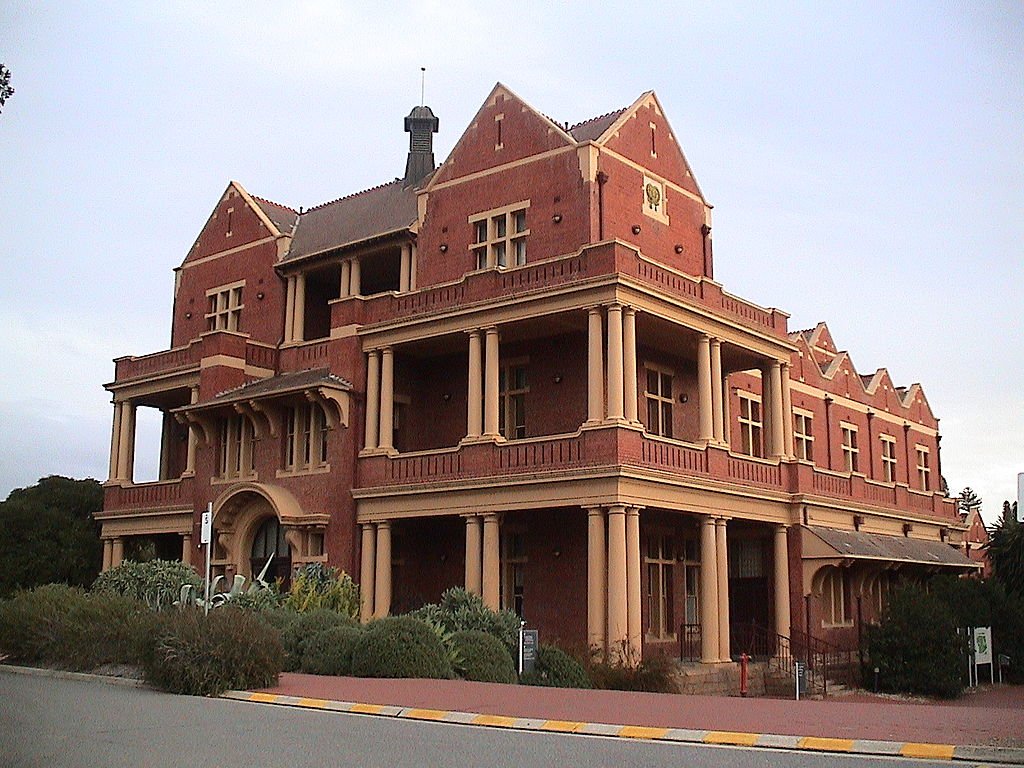#6492. Three-story Victorian red brick facade with classical columns and pointed gables
Before us stands an impressive historical building executed in late Victorian architectural style with elements of Neo-Gothic. The facade is symmetrical and constructed of red brick with contrasting light-colored elements of sandstone or limestone, creating a striking two-tone effect.
The building has three stories with characteristic pointed gables of the period. Particularly expressive are the classical order columns supporting the galleries on the second and third floors. They lend the structure monumentality despite the relatively modest size of the building. The facade is adorned with decorative elements including cornices, parapets, and elegant balustrades.
The window openings are rectangular and grouped in threes, which is typical for public buildings of that era. On the roof, there is a small tower with a cupola—a detail often used in civic architecture of the late 19th century. The ground floor features a semi-circular arched main entrance, adding elegance to the facade.
The building is surrounded by a well-maintained but restrained landscape, allowing the architecture to dominate the space. Judging by its scale and design, it was likely an administrative building or educational institution that may now serve as a museum or cultural center.
